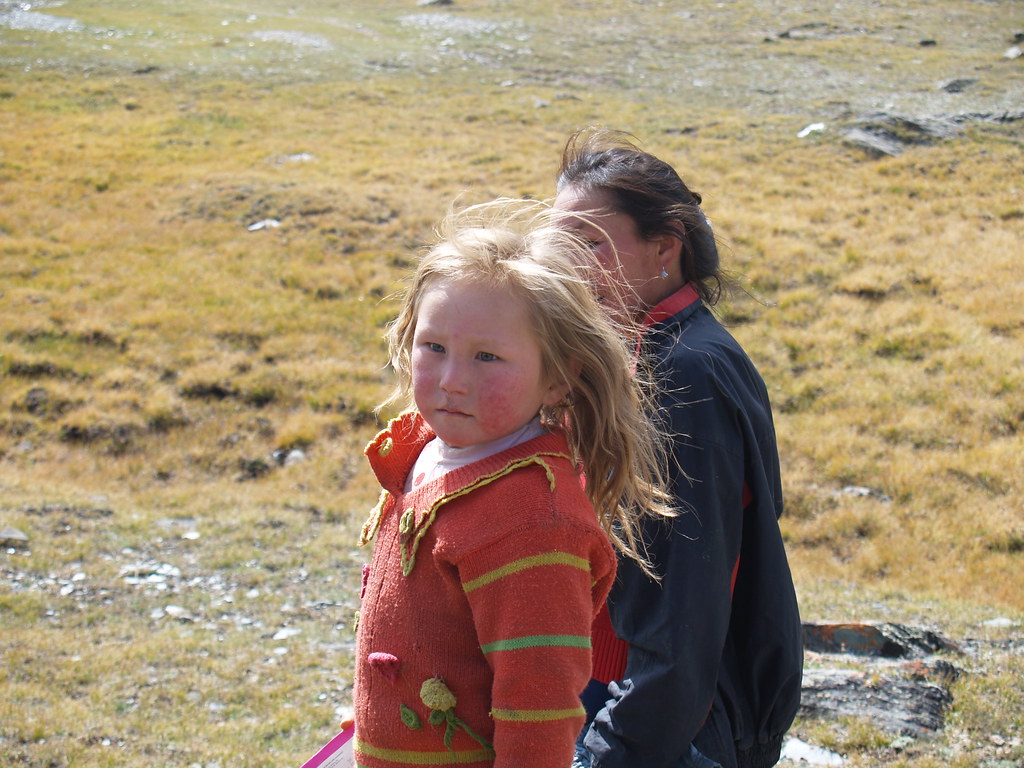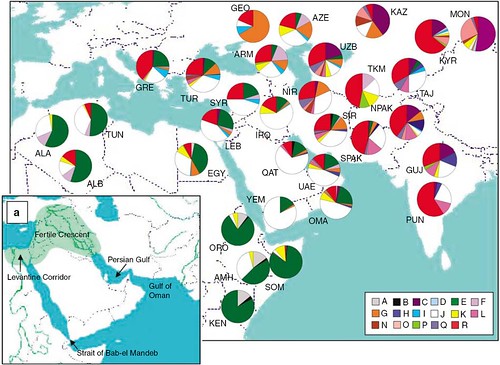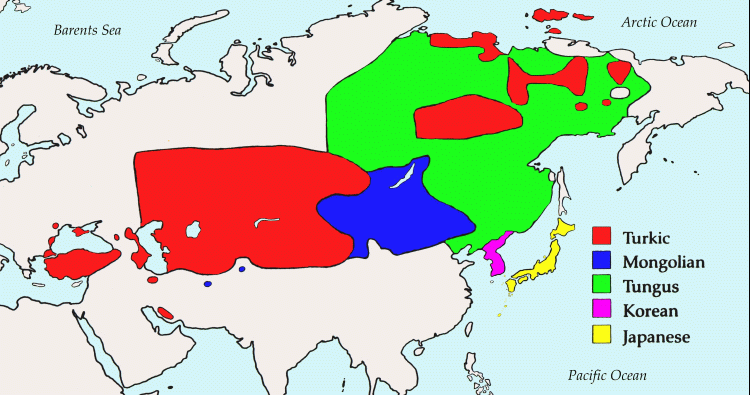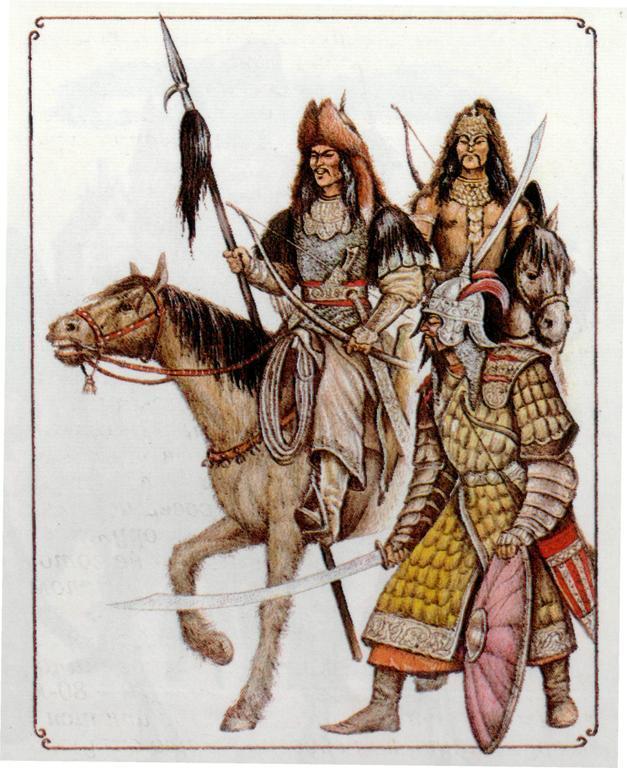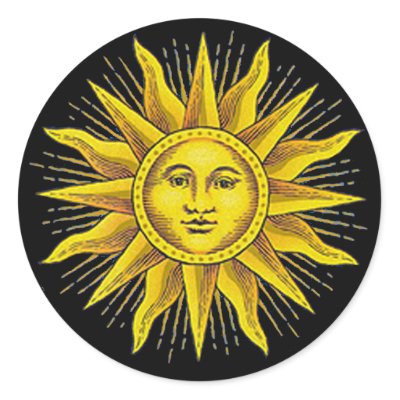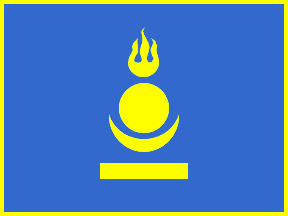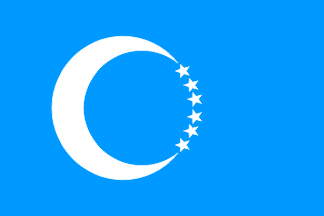I admit I've never properly fully read the books by Robert E.Howard. However seeing the 1982 movie Conan the Barbarian and filming locations, I was able to analyze the themes of the film which were inspired by true events and places.
In the beginning we see Conan's village in a cold forested area where it is raided by the snake cult led by Thulsa Doom.
The scene of the raid and killing of the adults in Conan's village is most likely inspired by the ancient attacks by the Scythians on the Cimmerians.
The characters in the movie, including Conan himself, his friends and his enemies are entirely fictional. But the tribes and ethnic groups they belong to are entirely historical. Conan is clearly a Cimmerian according to the story and characters created by E.Howard. The filming location was somewhere in Germany to depict the Cimmerian homeland. The Cimmerians lived in the northern portions of the Caucasus mountain region which is heavily forested and has cold snowy winters as depicted in the movie.
For the size of an entire ethnic group, the population of the Cimmerians in the movie seemed relatively small. My guess is they were meant to depict just one tribe of Cimmerians and not the entire ethnic group. Just as the Scythian horsemen in Thulsa Doom's army is meant to depict one tribe of Scythians and not the entire race.
After the attacks the children, including Conan are taken as slaves. Conan's wizard friend and film narrator explains the children were taken north. It shows the children led for days in chains to a flat desert plain with rocks and grass. North of the Caucasus region where such a landscape can be seen are the northeastern coasts of the Caspian sea towards the borders of Kazakhstan and the Russian Federation.
Also an interesting observation in the movie is that most people have European features. The movie is set in a time period when Central Asia was still inhabited by Caucasian skulled Indo-Europeans prior to the Turko-Mongol migrations which occurred mainly in the fifth and sixth centuries AD.
If you look carefully at the slave "owner" in the scene, he could easily be an ancestor of the bearded Pakhtuns of Afghanistan and Pakistan.
We see this slave owner selling Conan off to another slave owner with red hair and a beard. According to claims I've read by Turkic people, Kyrgyzstan was once filled with red haired people. This is possible since the Tocharians who lived in the Tarim desert east of Kyrgyzstan in China were said to have been Celtic related red haired people.
After Conan is sold to a new slave owner and becomes a successful gladiator, we hear the narrator saying he was taken to the far east.
In the "far east" of the movie Conan is seen being trained by Han Chinese warriors. The far east in the movie is most likely northwest of China. A strong inaccuracy here was the way the Han Chinese warriors were dressed. I think there is little evidence to suggest the Han Chinese dressed in such fashion in ancient times. Their outfits look more like they were from the first millennium AD.
The rest of the filming locations were taken in southern Italy and Spain. It shows mostly grassland and desert. It even shows scenes of snowfalls in the desert. This is Central Asia, a landmass which is nothing more than grasslands and deserts with dry, cold winters.
We also see Conan befriend Subutai, the unnamed wizard and Valeria, who fits the description of a Sarmatian.
The Sarmatians were often mistaken for the Scythians due to their nomadic lifestyle and common Iranic language. However the main difference between the two was that Sarmatian women were trained to fight unlike Scythian women.
In fact according to historians, Sarmatian women were not accepted for marriage unless they killed a warrior of the enemy tribe.
King Osric, another character from the story is shown. He is most likely another Indo-European tribal leader as his costume depicts:
The rest of the movie shows Conan and his friends situated around a the sea in the middle of the desert. The actual filming location was on a coastal area of the USA but from what I can see in the story it is most likely the coast of the Aral Sea.
A scene also shows Conan journeying for days in pursuit Thulsa Doom that takes him across to a mountainous area which appears to be a depiction of the Altay mountain region.
The only error I can see here is the Altay mountains have more grass and less sand/stones. It is less of a rocky landscape and more of a flat grassland region with rivers which the movie doesn't show.
Amongst the more fictional elements of the movie was the snake worship in Thulsa Doom's cult. Though animal worship was a strong part of Indo-European spiritualities and cultures, it was not restricted to any single animal worship, but a wide range of animals which most likely included snakes.
And as the creators of the movie commented, the snake cult is fictional even though I notice their symbols are derived from actual historic Indo-European cultures such as the sun and the moon.
The other fantasy elements are of course the magical themes and folklore altered to reality within the movie's storyline.
The second movie Conan the Destroyer is less relevant as it is further out of touch with reality and has more fantasy themes and plot-lines more so than the first film.
The geographic settings in the second film are the only realistic elements which depict the semi-forests and grasslands. This is because the story was set more towards Europe than desert/grassland covered Central Asia.
I usually don't discuss movies in my anthropology blog nor intend to in the future unless they're historical or inspired by history. But Conan the Barbarian is accurate for it's historical depictions of Central Asia and the Indo-European nomads who lived there prior to the Turko-Mongol migrations.
I recommend this movie to anyone who seeks a physical depiction of ancient Indo-European peoples of Central Asia on video and what the region looked like demographically in ancient times.
Post update: This trivia contains more possible inspirations to the movie.
Topics on race, culture, linguistics, genealogy, ethnology, society, history, archeology, spirituality and many other aspects of anthropology.
Saturday, July 9, 2011
Tuesday, July 5, 2011
Indo-European genetic, cultural and linguistic influence on Altaic peoples
Though not yet common knowledge, it is becoming well known that Central Asia was inhabited by Caucasian skulled Indo-European speaking populations in ancient times.
In fact Indo-European speaking populations made it as far east as modern day China, Mongolia and Siberia.
The most notable Indo-European ethno-linguistic groups to roam the Eurasian steppes and grasslands were the Scythians and Samaritans who spoke languages belonging to the Iranic branch of the Indo-European language family.
Earlier I had assumed that Indo-European (IE) genes found in Central Asian Turkic and Mongolic populations was a direct result of the migration tides by Altaic peoples (which includes both Turkic and Mongolic peoples) across Eurasia and their forceful destruction/assimilation of the remaining IE peoples living there.
But according to a book I read on the Scythians written by Tamara Talbot Rice published in 1961, various Scythian graves excavated in Central Asia and the Eurasian steppes revealed a Mongoloid figure(s) placed next to the Scythian in the grave. The Mongoloid individuals revealed in the various graves next to the Scythians were probably spouses or slaves buried next to their "masters" to serve them in the next world.
There's another book on the Scythians that I am currently reading published in 1980 by Renate Rolle called the The world of the Scythians.
That book claims that excavations in the Kurgan reveal Scythians with more Mongoloid features.
This could be a clear indication that Indo-Europeans were mixing with Altaic populations as far back the first millennium BC.
The light skinned/haired peoples in Mongolia and Central Asia might be the result of this as opposed to Turko-Mongol tribes migrating into Central Asia and bringing back their IE mates to present day Mongolia. The Turko-Mongols never moved back to the Altay mountain region upon their migrations in the fifth and sixth centuries AD. They just kept moving West as far as the Black Sea region.
It was the Scythians who migrated as far as the Altay mountain region and left their genetic imprints there. This is the reason why I believe many Mongolian and Turkic peoples in Central Asia look like the blond Mongolian child pictured below:
Even the Haplogroup map below shows larger genetic inputs of Haplogroup R in Central and Eastern Asia: (click on image to enlarge)
It should be noted that Haplogroup R and it's subclades have been associated with early Indo-European speaking populations and their descendants. The map of the Scythian inhabited territories coincides with high frequencies in the exact same regions: (click on image to enlarge)

All this is clear evidence of race mixing occurring between the Indo-European Scythians and Altaic populations in ancient times.
The Indo-Europeans, more specifically the Scythians went as far as the Altay mountain region and brought back ancient Altaic spouses and/or slaves with them when journeying across Central Asia.
Scythian royal family member ("Golden man") excavated in Central Asia:
Then towards the end of the first millennium BC, the Scythians started to disappear. As Tamara Talbot wrote in her book, the Scythians disappeared from the pages of history as abruptly as they appeared.
As I stated earlier, I had presumed the disappearance of IE languages and peoples in Central Asia to be the result of Altaic nomads who swept across the Eurasian wastelands, spreading death and destruction everywhere and that might be partially true, but not the only reason.
Indo-European genetic imprints in Altaic populations today might not be only because of Turko-Mongol assimilation, but rather Scythian incursions into the East of Eurasia.
The early Turko-Mongols might have been already carrying IE genes in them upon their sudden arrival from the Altay. Clearly they have been influenced by the Scythians in ancient times to have such enormous imprints of Haplogroup R and for Scythian grave mummies to show signs of Mongoloid features.
Horse domestication and usage is found amongst the Altaic peoples up till present day most likely seems to have it's roots in contact with IE nomads who journeyed east into Siberia and the Altay mountain region.
Horse domestication has long been associated with Indo-European peoples and many even blindly claim it to be an Indo-European invention.
Though I do not believe that the prehistoric Indo-Europeans were the only peoples or even the very first ones to be behind horse domestication, I still believe that they were amongst the first to be involved in such a practice.
The discovery of horses and chariot-like designs in Indo-European archeological sites are strong evidence that the IE peoples were amongst the first inventors of this practice.
It has been widely accepted that the domestication of the horse and invention of the chariot is the reason for the Indo-European language family having been able to cover so much landmass.
Grave excavations, artifacts and inscriptions indicate how important the horse and the chariot were in Indo-European cultures. Greek and Roman mythology are good example of the horses importance to Indo-European cultures and spirituality. Germanic mythology also shows the importance of the horse and it's usage to the Indo-Europeans.
Below is a horse and chariot symbol possibly from Germanic mythology:
Many sources that I have come across also claim early IE dialects having several terminologies for horses and horse domestication.
Horses were also often sacrificed and buried with their "owners" in Scythian culture. This is probably to accompany their "owners" into the next world. It is the usage of the horse that gave the Scythians and just about the entire Indo-Europeans such mobility across Eurasia.
Such usages of the horse and mobile vehicles attached to them is not as well noted by other races and cultures in ancient times as much as the practice has been associated with Indo-European peoples.
Of course in more recent centuries we've seen other races adapt to this practice such as the Semites and the Turko-Mongols. This is a cultural imprint left behind on them from contact with Indo-European peoples, most likely the Scythians.
Though the Altaic language family is relatively small compared to the Indo-European family in terms of numbers of languages and native speakers, it is still very comparable to IE in many other ways.
The Altaic language family covers plenty of landmass much like the IE family does. It also spread in much the same way across the Eurasian continent adjacent to it's original homeland (the Altay mountain region) going in the opposite direction like the IE family, except IE has it's presence on two sides adjacent to it's original homeland whereas Altaic has only one known direction going West and Southwestward of it's original homeland.
Refer to the following maps. A map of the Altaic languages subfamilies and where they are spoken:
A map showing the spread of the IE languages:
The spread of the Altaic languages across the Eurasian continent, much like in the same manner as Indo-European was once again owed to mobility and transportation which was made available with the use of horses and chariots. Horse domestication and controlled breeding by Turkic peoples is described in this source.
The domestication and usage of the horses was a trait the Turko-Mongols most likely picked up from Indo-Europeans in ancient times.
Horse domestication and usage was also successful with the Mongols and their rise to power in the 12th century under Genghis Khan. According to a documentary I once saw, the Mongols also switched horses at checkpoints to be able to cover vast distances.
Depiction of Tatars on horses:
Sources on Indo-European cultures throughout Central Asia as well as the Eurasian steppes such as this book summary mention the importance of the horse to ancient Indo-European peoples.
Horse domestication and usage is most likely another cultural trait picked up by Altaic peoples from the Indo-Europeans.
I was recently watching a documentary on Genghis Khan and the Mongols (I haven't finished seeing it) and it discussed Mongolian customs during the great Khans. The burial of horses, spouses, jewelry and other possessions into an important Mongol leader's grave sounded like a carbon copy of those described in Scythian customs. All of this is too similar to be coincidental.
Blood bothering is another practice reported amongst the Scythians and was also commonly found in the twelfth century Mongols, including Genghis Khan himself.
Another strong comparable cultural trait between Altaic and Indo-European peoples are astronomical symbols found amongst both cultures/spiritualities.
Take for example the sun and moon symbols found on these crosses flags of Mongolia and Kazakhstan: (click on image to enlarge)
They bear striking resemblances to astronomical symbols used by Indo-European peoples. Take for example this sun symbol from Roman mythology:
The differences are obvious, but the directional design of the sun is almost entirely the same as the sun designs of Turko-Mongol peoples.
Here are other symbols used by Indo-European peoples. The mythological creature and sun in the background are traditional symbols found in the cultures of Iranic peoples such as Kurds and Persians in this case:
The moon is also a comparable astronomical symbol between the Turko-Mongols and the Indo-Europeans as both civilizations have them displayed in a similar crescent shape.
Take for example this Greek crescent moon symbol representing the moon goddess from Greek mythology:
Here are some historic and unofficial flags of Turko-Mongol peoples that have astronomical symbols very similar to Indo-European ones:
Click on image to enlarge:
I'm not trying to imply that Indo-Europeans were the first to practice sun and moon worship and that everyone else borrowed the practice from them. The worship of astronomical objects amongst humans is found in cultures throughout the world going back thousands of years.
This is only natural due to the fact that the living inhabitants on the surface of the planet Earth have been exposed to them since their very existence.
However the design of the sun and moon as well as other astronomical symbols in Indo-European cultures is depicted in a certain style more distinct from other cultures. If one looks at designs and depictions of the same objects in various unrelated cultures they vary and look very distinct.
For example if you compare the Valentine heart to that of ancient Egyptian depictions of the heart. The Egyptian depiction of the human heart is the same as the real heart, whereas the Valentine heart is imaginative and bears no resemblance to the actual heart.
Likewise there are cultures that depict astronomical symbols in different shapes and designs.
The similar directional designs in the examples I provided all seem to point to a common origin.
The presence of Indo-Europeans across the Eurasian steppes plus evidence of genetic influence alongside grave sites as far as the Altay is too big of a coincidence for the symbols of the Altaic peoples to resemble Indo-European ones.
The locations of such burial tombs are found in Kazakhstan and even further east in Siberia and Mongolia.
There is no doubt in my mind that there is a common source in such cultural practices in the peoples of the Altaic steppes, their relatives in Central Asia and those of the ancient Indo-Europeans.
On the linguistic side I have also found linkages. Many sources such as this one claim linkages between the Indo-Aryan languages and the Mongolic languages.
I've seen many comparisons between Hindi, an Indo-Aryan language, and Mongolian. I first presumed this to a another result of Scythian contact with Proto-Turko-Mongols since the Scythian language was an Iranic language.
The Iranic languages along with the Indo-Aryan languages as well the Dardic and Nuristani languages all constitute the Indo-Iranic language family.
The extinct Scythian language belonging to the Iranic subbranch of Indo-Iranic would technically be the closest language to modern Hindi spoken in the area of the Eastern Eurasian steppes.
But now it appears there is an even closer link which is not a Scythian source in this case. Sanskrit is described as "the mother of all modern Indo-Aryan languages."
Sanskrit has also been the sacred language of various cults/religions throughout much of South and Central Asia. It has often been the sacred language of Buddhism and the language of many spiritualities today dubbed as "Hinduism."
The vast majority of Mongolians today are Buddhist and Sanskrit appears to have been used for prayer by the Mongols for centuries. They might not use it today, but Indo-Aryan traces are found in Mongolian, most likely as a result of Sanskrit usage for religious services.
All of these are evidence of genetic, cultural, and linguistic influence of Indo-Europeans on Altaic peoples.
In fact Indo-European speaking populations made it as far east as modern day China, Mongolia and Siberia.
The most notable Indo-European ethno-linguistic groups to roam the Eurasian steppes and grasslands were the Scythians and Samaritans who spoke languages belonging to the Iranic branch of the Indo-European language family.
Earlier I had assumed that Indo-European (IE) genes found in Central Asian Turkic and Mongolic populations was a direct result of the migration tides by Altaic peoples (which includes both Turkic and Mongolic peoples) across Eurasia and their forceful destruction/assimilation of the remaining IE peoples living there.
But according to a book I read on the Scythians written by Tamara Talbot Rice published in 1961, various Scythian graves excavated in Central Asia and the Eurasian steppes revealed a Mongoloid figure(s) placed next to the Scythian in the grave. The Mongoloid individuals revealed in the various graves next to the Scythians were probably spouses or slaves buried next to their "masters" to serve them in the next world.
There's another book on the Scythians that I am currently reading published in 1980 by Renate Rolle called the The world of the Scythians.
That book claims that excavations in the Kurgan reveal Scythians with more Mongoloid features.
This could be a clear indication that Indo-Europeans were mixing with Altaic populations as far back the first millennium BC.
The light skinned/haired peoples in Mongolia and Central Asia might be the result of this as opposed to Turko-Mongol tribes migrating into Central Asia and bringing back their IE mates to present day Mongolia. The Turko-Mongols never moved back to the Altay mountain region upon their migrations in the fifth and sixth centuries AD. They just kept moving West as far as the Black Sea region.
It was the Scythians who migrated as far as the Altay mountain region and left their genetic imprints there. This is the reason why I believe many Mongolian and Turkic peoples in Central Asia look like the blond Mongolian child pictured below:
Even the Haplogroup map below shows larger genetic inputs of Haplogroup R in Central and Eastern Asia: (click on image to enlarge)
It should be noted that Haplogroup R and it's subclades have been associated with early Indo-European speaking populations and their descendants. The map of the Scythian inhabited territories coincides with high frequencies in the exact same regions: (click on image to enlarge)

All this is clear evidence of race mixing occurring between the Indo-European Scythians and Altaic populations in ancient times.
The Indo-Europeans, more specifically the Scythians went as far as the Altay mountain region and brought back ancient Altaic spouses and/or slaves with them when journeying across Central Asia.
Scythian royal family member ("Golden man") excavated in Central Asia:
Then towards the end of the first millennium BC, the Scythians started to disappear. As Tamara Talbot wrote in her book, the Scythians disappeared from the pages of history as abruptly as they appeared.
As I stated earlier, I had presumed the disappearance of IE languages and peoples in Central Asia to be the result of Altaic nomads who swept across the Eurasian wastelands, spreading death and destruction everywhere and that might be partially true, but not the only reason.
Indo-European genetic imprints in Altaic populations today might not be only because of Turko-Mongol assimilation, but rather Scythian incursions into the East of Eurasia.
The early Turko-Mongols might have been already carrying IE genes in them upon their sudden arrival from the Altay. Clearly they have been influenced by the Scythians in ancient times to have such enormous imprints of Haplogroup R and for Scythian grave mummies to show signs of Mongoloid features.
Horse domestication and usage is found amongst the Altaic peoples up till present day most likely seems to have it's roots in contact with IE nomads who journeyed east into Siberia and the Altay mountain region.
Horse domestication has long been associated with Indo-European peoples and many even blindly claim it to be an Indo-European invention.
Though I do not believe that the prehistoric Indo-Europeans were the only peoples or even the very first ones to be behind horse domestication, I still believe that they were amongst the first to be involved in such a practice.
The discovery of horses and chariot-like designs in Indo-European archeological sites are strong evidence that the IE peoples were amongst the first inventors of this practice.
It has been widely accepted that the domestication of the horse and invention of the chariot is the reason for the Indo-European language family having been able to cover so much landmass.
Grave excavations, artifacts and inscriptions indicate how important the horse and the chariot were in Indo-European cultures. Greek and Roman mythology are good example of the horses importance to Indo-European cultures and spirituality. Germanic mythology also shows the importance of the horse and it's usage to the Indo-Europeans.
Below is a horse and chariot symbol possibly from Germanic mythology:
Many sources that I have come across also claim early IE dialects having several terminologies for horses and horse domestication.
Horses were also often sacrificed and buried with their "owners" in Scythian culture. This is probably to accompany their "owners" into the next world. It is the usage of the horse that gave the Scythians and just about the entire Indo-Europeans such mobility across Eurasia.
Such usages of the horse and mobile vehicles attached to them is not as well noted by other races and cultures in ancient times as much as the practice has been associated with Indo-European peoples.
Of course in more recent centuries we've seen other races adapt to this practice such as the Semites and the Turko-Mongols. This is a cultural imprint left behind on them from contact with Indo-European peoples, most likely the Scythians.
Though the Altaic language family is relatively small compared to the Indo-European family in terms of numbers of languages and native speakers, it is still very comparable to IE in many other ways.
The Altaic language family covers plenty of landmass much like the IE family does. It also spread in much the same way across the Eurasian continent adjacent to it's original homeland (the Altay mountain region) going in the opposite direction like the IE family, except IE has it's presence on two sides adjacent to it's original homeland whereas Altaic has only one known direction going West and Southwestward of it's original homeland.
Refer to the following maps. A map of the Altaic languages subfamilies and where they are spoken:
A map showing the spread of the IE languages:
The spread of the Altaic languages across the Eurasian continent, much like in the same manner as Indo-European was once again owed to mobility and transportation which was made available with the use of horses and chariots. Horse domestication and controlled breeding by Turkic peoples is described in this source.
The domestication and usage of the horses was a trait the Turko-Mongols most likely picked up from Indo-Europeans in ancient times.
Horse domestication and usage was also successful with the Mongols and their rise to power in the 12th century under Genghis Khan. According to a documentary I once saw, the Mongols also switched horses at checkpoints to be able to cover vast distances.
Depiction of Tatars on horses:
Sources on Indo-European cultures throughout Central Asia as well as the Eurasian steppes such as this book summary mention the importance of the horse to ancient Indo-European peoples.
Horse domestication and usage is most likely another cultural trait picked up by Altaic peoples from the Indo-Europeans.
I was recently watching a documentary on Genghis Khan and the Mongols (I haven't finished seeing it) and it discussed Mongolian customs during the great Khans. The burial of horses, spouses, jewelry and other possessions into an important Mongol leader's grave sounded like a carbon copy of those described in Scythian customs. All of this is too similar to be coincidental.
Blood bothering is another practice reported amongst the Scythians and was also commonly found in the twelfth century Mongols, including Genghis Khan himself.
Another strong comparable cultural trait between Altaic and Indo-European peoples are astronomical symbols found amongst both cultures/spiritualities.
Take for example the sun and moon symbols found on these crosses flags of Mongolia and Kazakhstan: (click on image to enlarge)
They bear striking resemblances to astronomical symbols used by Indo-European peoples. Take for example this sun symbol from Roman mythology:
The differences are obvious, but the directional design of the sun is almost entirely the same as the sun designs of Turko-Mongol peoples.
Here are other symbols used by Indo-European peoples. The mythological creature and sun in the background are traditional symbols found in the cultures of Iranic peoples such as Kurds and Persians in this case:
The moon is also a comparable astronomical symbol between the Turko-Mongols and the Indo-Europeans as both civilizations have them displayed in a similar crescent shape.
Take for example this Greek crescent moon symbol representing the moon goddess from Greek mythology:
Here are some historic and unofficial flags of Turko-Mongol peoples that have astronomical symbols very similar to Indo-European ones:
Click on image to enlarge:
I'm not trying to imply that Indo-Europeans were the first to practice sun and moon worship and that everyone else borrowed the practice from them. The worship of astronomical objects amongst humans is found in cultures throughout the world going back thousands of years.
This is only natural due to the fact that the living inhabitants on the surface of the planet Earth have been exposed to them since their very existence.
However the design of the sun and moon as well as other astronomical symbols in Indo-European cultures is depicted in a certain style more distinct from other cultures. If one looks at designs and depictions of the same objects in various unrelated cultures they vary and look very distinct.
For example if you compare the Valentine heart to that of ancient Egyptian depictions of the heart. The Egyptian depiction of the human heart is the same as the real heart, whereas the Valentine heart is imaginative and bears no resemblance to the actual heart.
Likewise there are cultures that depict astronomical symbols in different shapes and designs.
The similar directional designs in the examples I provided all seem to point to a common origin.
The presence of Indo-Europeans across the Eurasian steppes plus evidence of genetic influence alongside grave sites as far as the Altay is too big of a coincidence for the symbols of the Altaic peoples to resemble Indo-European ones.
The locations of such burial tombs are found in Kazakhstan and even further east in Siberia and Mongolia.
There is no doubt in my mind that there is a common source in such cultural practices in the peoples of the Altaic steppes, their relatives in Central Asia and those of the ancient Indo-Europeans.
On the linguistic side I have also found linkages. Many sources such as this one claim linkages between the Indo-Aryan languages and the Mongolic languages.
I've seen many comparisons between Hindi, an Indo-Aryan language, and Mongolian. I first presumed this to a another result of Scythian contact with Proto-Turko-Mongols since the Scythian language was an Iranic language.
The Iranic languages along with the Indo-Aryan languages as well the Dardic and Nuristani languages all constitute the Indo-Iranic language family.
The extinct Scythian language belonging to the Iranic subbranch of Indo-Iranic would technically be the closest language to modern Hindi spoken in the area of the Eastern Eurasian steppes.
But now it appears there is an even closer link which is not a Scythian source in this case. Sanskrit is described as "the mother of all modern Indo-Aryan languages."
Sanskrit has also been the sacred language of various cults/religions throughout much of South and Central Asia. It has often been the sacred language of Buddhism and the language of many spiritualities today dubbed as "Hinduism."
The vast majority of Mongolians today are Buddhist and Sanskrit appears to have been used for prayer by the Mongols for centuries. They might not use it today, but Indo-Aryan traces are found in Mongolian, most likely as a result of Sanskrit usage for religious services.
All of these are evidence of genetic, cultural, and linguistic influence of Indo-Europeans on Altaic peoples.
Subscribe to:
Posts (Atom)


